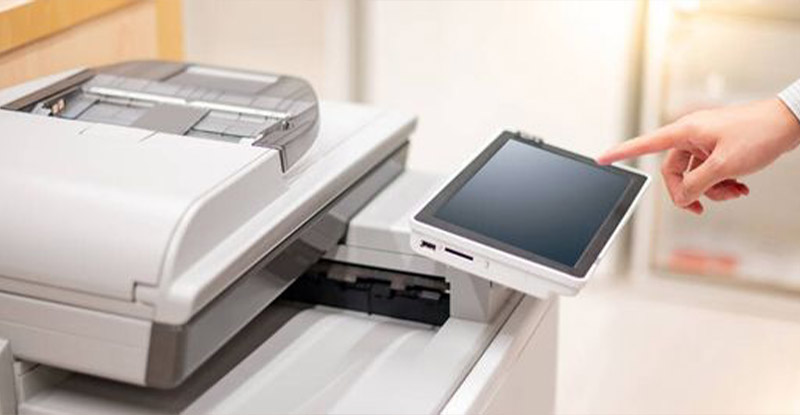The Intersection of Big Data and OCR in Document Processing Automation


Reveal the transformative impact of Big Data and OCR on document processing automation. Learn how the integration of these cutting-edge technologies enhances data accessibility, accuracy, and insights. Explore the synergy between Big Data and OCR to optimize your document processing workflows.
In today’s digital age, the volume of data generated from various sources continues to grow exponentially. Invoices, contracts, receipts, applications – the list goes on. Manually processing these documents is a time-consuming and error-prone task.This influx of data presents both challenges and opportunities for businesses, particularly in document processing.
Here comes the solution – a powerful duo: Big Data and Optical Character Recognition (OCR). This dynamic combination is revolutionizing document processing automation, streamlining workflows and unlocking hidden insights. Let’s delve into the intersection of Big Data and OCR, exploring how they work together to conquer your document mountain.
In this article, we will examine how harnessing Big Data and its particular application in optical character recognition can revolutionize document processing.

No more manual data entry headaches thanks to streamlined workflows and actionable insights. Experience the future of document processing with Big Data and OCR—request your demo today!
Harnessing Big Data in document processing offers numerous benefits, including automation, efficiency, personalization, risk management, predictive insights, scalability, and competitive advantage. By embracing Big Data technologies, businesses can unlock the full potential of their document processing capabilities and stay ahead in an increasingly data-driven world.
Big Data technologies enable the extraction of valuable insights from large volumes of documents, such as invoices, contracts, and reports. By leveraging advanced analytics tools, businesses can analyze text, images, and metadata within documents to uncover trends, patterns, and anomalies.
For businesses of all sizes, Big Data allows for personalized document processing solutions tailored to specific business needs. By analyzing customer data and preferences, businesses can customize document templates, content, and delivery methods to enhance customer experience and engagement.
In addition, Big Data analytics can automate document processing tasks, reducing manual intervention and streamlining workflows. Machine learning algorithms can be trained to recognize patterns and extract relevant information from documents, improving efficiency and accuracy.
Big Data analytics can help businesses identify potential risks and ensure compliance with regulatory requirements in document processing. By analyzing large datasets, businesses can detect fraud, errors, or non-compliance issues in documents and take proactive measures to mitigate risks.
Another important advantage is that Big Data analytics enable predictive modeling and forecasting in document processing. By analyzing historical data and patterns, businesses can predict future document processing trends, anticipate customer needs, and optimize resource allocation.
Overall, harnessing Big Data in document processing provides businesses with a competitive advantage in today’s digital marketplace. By leveraging data-driven insights and automation, businesses can streamline operations, improve decision-making, and drive innovation.
Ready to revolutionize your document processing? Discover the game-changing capabilities of Artsyl docAlpha powered by Big Data and AI-enhanced OCR. Don’t miss out—explore docAlpha now!
Book a demo now
OCR (Optical Character Recognition) technology and Big Data analytics complement each other seamlessly in document processing. OCR enables the conversion of scanned documents and images into machine-readable text, unlocking valuable data trapped within documents.
Big Data analytics then leverages this extracted data to derive insights, patterns, and trends from large volumes of documents. By combining OCR with Big Data, businesses can automate document processing, extract actionable insights, and optimize workflows for enhanced efficiency and decision-making.
OCR technology is a process that converts scanned documents, images, or PDF files into editable and searchable text. Using algorithms and pattern recognition techniques, OCR software recognizes characters, symbols, and fonts in scanned images and translates them into machine-readable text.
OCR functionality enables businesses to digitize paper documents, automate data entry tasks, and extract valuable information from scanned materials. With OCR, companies can unlock the data trapped in physical documents and integrate it into digital workflows for improved efficiency and accessibility.
PEOPLE ALSO READ: PDF OCR Conversion
OCR plays a crucial role in digitizing text and images by transforming non-editable content into searchable and editable formats. In today’s digital age, businesses deal with a vast amount of information stored in paper documents, images, and PDFs.
In particular, OCR technology enables businesses to convert this unstructured data into machine-readable text, making it easier to store, search, and analyze. By digitizing text and images, OCR enhances data accessibility, collaboration, and efficiency, enabling businesses to leverage their information assets more effectively.

Contact Us for an in-depth
product tour!
OCR technology has numerous applications in document processing automation across various industries.
Overall, OCR enables businesses to automate repetitive tasks, reduce manual errors, and improve efficiency in document processing workflows.
CONTINUE LEARNING: Document OCR – Simplifying Work Processes
OCR technology is often used to extract text and data from scanned documents, such as invoices, purchase orders, and receipts. This extracted data can then be used as input for Big Data analytics. Let’s explore this in more detail.
Utilizing Big Data analytics to analyze and interpret OCR-extracted data offers businesses valuable insights and opportunities for document processing optimization.
To begin with, Big Data analytics allows businesses to process vast amounts of OCR-extracted data from documents to uncover patterns, trends, and correlations. By analyzing OCR-extracted data with Big Data tools and techniques, businesses can identify customer preferences, market trends, and operational inefficiencies.
In addition, Big Data analytics enables businesses to gain deeper insights into OCR-extracted data, such as sales trends, product performance, and customer behavior. Through predictive modeling and machine learning algorithms, Big Data analytics can forecast future outcomes and trends based on OCR-extracted data.
All in all, utilizing Big Data analytics to analyze and interpret OCR-extracted data empowers businesses to make data-driven decisions, optimize processes, and drive innovation in document management and beyond.
Elevate your document processing to new heights with Artsyl docAlpha! Harness the synergy of Big Data and OCR to unlock hidden insights, automate tedious tasks, and accelerate your business growth.
Book a demo now
Integrating OCR (Optical Character Recognition) and Big Data offers a multitude of benefits for businesses across various industries. Let’s outline some of the advantages:
As you can see, integrating OCR and Big Data provides businesses with a competitive edge by enabling them to harness the power of data-driven insights, optimize processes, and innovate faster, ultimately driving business growth and success.
Integrating OCR (Optical Character Recognition) with Big Data presents numerous opportunities for businesses, but it also comes with its fair share of challenges and limitations. Here are five potential challenges and limitations:
OCR technology may encounter challenges in accurately extracting text from scanned documents, especially if the documents are of poor quality, contain handwritten text, or are in languages with complex characters. This can lead to inaccuracies in the OCR-extracted data, impacting the reliability of insights derived from Big Data analytics.

Processing large volumes of OCR-extracted data with Big Data analytics tools can strain computational resources and impact performance. Businesses may encounter scalability issues when trying to analyze massive datasets in real-time or within acceptable timeframes.
RELATED ARTICLE: Interrelation Between OCR Capture & Artificial Intelligence
OCR-extracted data may contain errors, noise, or inconsistencies that need to be addressed before analysis. Preprocessing steps such as data cleaning, normalization, and validation are essential to ensure the quality and integrity of the data before feeding it into Big Data analytics pipelines.
Integrating OCR with existing Big Data infrastructure and analytics platforms can be complex and time-consuming. Businesses may face challenges in seamlessly integrating OCR technologies with their data storage, processing, and analytics systems, requiring careful planning and technical expertise.
OCR-extracted data often contains sensitive information, such as personal or financial data, which raises privacy and security concerns. Businesses must implement robust data protection measures, including encryption, access controls, and compliance with data regulations, to safeguard OCR-extracted data throughout the integration process.
In our first example, a healthcare solutions provider faced challenges in efficiently managing medical records, which consisted of a vast amount of unstructured data stored in scanned documents and images. Extracting valuable insights from this data for research, patient care, and operational optimization was time-consuming and labor-intensive.
Seeking a solution, the healthcare solutions provider implemented OCR technology to digitize and extract text from medical records, prescriptions, and diagnostic reports. They integrated OCR-extracted data with Big Data analytics tools to analyze patient demographics, treatment patterns, and disease prevalence. By leveraging Big Data analytics, they gained insights into healthcare trends, identified opportunities for improving patient care, and optimized resource allocation.
The synergy between OCR and Big Data enabled the healthcare solutions provider to streamline medical record management, enhance data accessibility, and improve decision-making. They achieved greater operational efficiency, reduced costs, and provided better patient outcomes through data-driven insights.
RELATED RESOURCE: Streamlining Healthcare Billing: Simplifying UB-04 Form Processing
In our second example, a large retail corporation struggled with manual inventory management processes, relying on paper-based records and handwritten labels for product identification. Analyzing sales trends, forecasting demand, and optimizing inventory levels across multiple stores were challenging due to the sheer volume of data and lack of real-time insights.
To resolve these issues, the retail corporation deployed OCR technology to digitize product labels, barcodes, and invoices, enabling automatic data extraction and inventory tracking. They integrated OCR-extracted data with Big Data analytics platforms to analyze sales data, customer behavior, and inventory turnover rates.
By combining OCR and Big Data, the retailer gained real-time visibility into stock levels, optimized supply chain operations, and personalized marketing strategies based on customer preferences.
The synergy between OCR and Big Data empowered this large retail corporation to improve inventory management, reduce stockouts, and increase sales. They achieved higher customer satisfaction, improved inventory turnover rates, and gained a competitive edge in the retail market through data-driven insights and optimization.
Transform your document processing with the ultimate power duo: Big Data and OCR, brought to you by Artsyl docAlpha. Seamlessly extract, analyze, and act on valuable data from your documents like never before.
Book a demo now
Big Data refers to large and complex datasets that cannot be processed or analyzed using traditional data processing applications. These datasets typically include structured, semi-structured, and unstructured data from various sources, such as sensors, social media, and transactional systems. Big Data is characterized by its volume, velocity, and variety, requiring specialized tools and techniques for storage, processing, and analysis.
Data processing involves the conversion of raw data into meaningful information through various operations, such as collection, cleaning, transformation, and analysis. In the context of Big Data and OCR, data processing encompasses tasks related to managing and analyzing large volumes of documents, images, and text to extract valuable insights and patterns.
OCR is a technology that converts scanned documents, images, or PDF files into editable and searchable text. Using algorithms and pattern recognition techniques, OCR software recognizes characters, symbols, and fonts in scanned images and translates them into machine-readable text. OCR plays a crucial role in digitizing text and images for document processing and analysis.
Document processing refers to the systematic handling of documents, including creation, storage, retrieval, and manipulation, to support business operations and decision-making. In the context of Big Data and OCR, document processing involves tasks such as digitizing paper documents, extracting text and metadata, and analyzing document content for insights and patterns.
Data extraction is the process of retrieving specific information or data elements from a dataset or document. In the context of OCR and document processing, data extraction involves extracting text, images, or metadata from scanned documents and images for further analysis or processing.

Text mining, also known as text analytics or natural language processing (NLP), is the process of deriving meaningful insights and patterns from unstructured text data. In the context of Big Data and OCR, text mining techniques are used to analyze OCR-extracted text from documents for sentiment analysis, topic modeling, and entity recognition.
Pattern recognition is the process of identifying patterns, trends, or regularities in data through statistical analysis and machine learning algorithms. In the context of document processing, pattern recognition techniques are used to identify recurring patterns or structures in OCR-extracted text and images for classification, clustering, and prediction.
In summary, OCR and document processing automation play a crucial role in preparing and managing the data that feeds into big data analytics systems, enabling organizations to derive valuable insights from their document repositories.
Ready to supercharge your document processing? Experience the magic of Artsyl docAlpha fueled by Big Data and OCR. Don’t settle for ordinary—embrace the extraordinary with docAlpha!
Book a demo now
The synergy between Big Data and OCR is a game-changer for document processing automation. By harnessing the power of vast data storage and intelligent character recognition, businesses can achieve:
Ready to embrace the future of document processing? By leveraging Big Data and OCR, you can transform your document workflows, save time and money, and gain a competitive edge. So, go ahead and embrace the digital revolution!